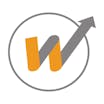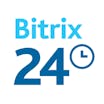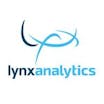How Do Information-gathering Tools Help Find Business Solutions
Business Intelligence Tools
Compare All Business Intelligence Tools
Filters
Apply Filters:
XYour Industry
-
-
-
-
-
-
-
-
-
-
-
-
-
-
-
-
-
-
-
-
-
-
-
-
-
-
-
-
-
-
-
-
-
-
-
-
-
-
-
-
-
-
-
-
-
-
-
-
-
-
-
-
-
-
-
-
-
-
-
-
-
-
-
-
-
-
-
-
-
-
-
-
-
-
-
-
-
-
-
-
-
-
-
-
-
-
-
-
-
-
-
-
-
-
-
-
-
-
-
-
-
-
-
-
-
-
-
-
-
-
-
-
-
-
-
-
-
-
-
-
-
-
-
-
-
-
-
-
-
-
-
-
-
-
-
-
-
-
-
-
-
-
-
-
-
-
-
-
+ Show all
Your Company Size
-
-
-
-
-
-
-
-
+ Show all
Sort by

Wrike
Wrike
Wrike is a cloud-based project management platform for teams of 20+ that is suitable for both large enterprises and SMBs. It supports remote work for various teams. This solution comes with Gantt charts, calendars, workload view f...Read more

A2X
A2X
A2X is an ETL and financial management solution that helps businesses automate accounting for multiple eCommerce platforms, such as Walmart, Shopify, Etsy, Amazon, and eBay. A2X allows businesses to integrate the platform with se...Read more

Dreamdata
Dreamdata
Dreamdata is a cloud-based platform for marketing and revenue attribution. The solution allows businesses to track and analyze how certain activities are impacting revenue, how individual channels are performing and what is drivin...Read more

Nakisa Hanelly
Nakisa Hanelly
Nakisa Hanelly is a cloud-based solution that offers organizational chart creation, org design capabilities, and HR analytics. This solution is designed for mid-sized to large enterprises and integrates with existing ERP, HRIS, an...Read more

TeamMate Analytics
TeamMate Analytics
TeamMate Analytics is an on-premise data analytics solution, which helps auditors aggregate data from various sources and monitor, detect and mitigate hidden risks. Features include including data visualization, sampling, sheet in...Read more

Integration Hub
Integration Hub
Integration Hub is an on-premise and cloud-based data integration platform that provides businesses with tools to connect SAP with various third-party applications. Professionals can use the dashboard to access pre-configured inte...Read more
No reviews yet

Exportier - Data Export
Exportier - Data Export
Exportier - Data Export is a useful and convenient tool for exporting Shopify data. Exportier - Data Export allows exporting data to CSV and Excel formats for further use and analysis or import to BI tools. Prepare the needed Sho...Read more
No reviews yet

Bitrix24
Bitrix24
Bitrix24 is a client management solution that provides a platform for businesses to organize and track interactions with potential or existing clients and partners. The software allows users to log and manage client interactions, ...Read more

Hexomatic
Hexomatic
Hexomatic is a no-code, work automation platform that enables businesses to harness the internet as their own data source and leverage ready-made automations to scale time-consuming tasks. This platform allows users to scrape the ...Read more

PayReview
PayReview
PayReview is a digital cloud solutions for compensation and benefits. Pay Review helps companies in right allocation of HR investments for better talent decisions like Merit, Incentives, Budgets and Workforce Planning Solutions....Read more
Software pricing tips
Read our Business Intelligence Buyers GuideSubscription models
- Per employee/per month: This model allows you to pay a monthly fee for each of your employees.
- Per user/per month: Users pay a monthly fee for users—normally administrative users—rather than all employees.
Perpetual license
- This involves paying an upfront sum for the license to own the software and use it indefinitely.
- This is the more traditional model and is most common with on-premise applications and with larger businesses.
Rated best value for money

Customer Happiness Index
Customer Happiness Index
Customer Happiness Index is a predictive analytics platform designed to help businesses identify and measure key drivers that impact churn rates, average revenue per user (ARPU) and customer lifetime value (CLV). It enables admini...Read more
No reviews yet

ImportOmatic
ImportOmatic
ImportOMatic is a data integration solution for Blackbaud's Raiser's Edge and Raiser's Edge NXT fundraising solutions. It is deployed as a plug-in for the Raiser's Edge platform. ImportOMatic allows users to filter and transf...Read more

BizMerlinHR
BizMerlinHR
BizMerlinHR is a cloud-based human resource management solution that helps mid to large enterprises manage the entire employee lifecycle, from onboarding to comprehensive employee records to performance management to team retentio...Read more

TGN Data
TGN Data
TGN is a cloud-based pricing intelligence software designed to help businesses monitor competitor data to optimize existing processes. Key features include benchmarking, website monitoring, trend analysis, competing product analys...Read more

Celigo Integrator.io
Celigo Integrator.io
Celigo Integrator.io is a cloud-based app integration platform. It helps businesses automate business processes from a unified platform. Its products include integrator.io, SmartConnectors and CloudExtend. Celigo's integratio...Read more

Hexowatch
Hexowatch
Hexowatch is a business intelligence (BI) software that helps enterprises leverage artificial intelligence (AI) technology to monitor websites and receive automated alerts about visual, content, source code, technology, availabili...Read more

Trujay
Trujay
Recognized as the best tool for migrating data to or from Salesforce, Trujay supports a large number of CRM systems through its migration wizard and guided/custom migrations. No technical skills or additional software is needed. N...Read more

SQUEAKS
SQUEAKS
SQUEAKS is a Smart Factory digital communication and collaboration platform that helps teams better understand "what's important now" while at the same time more effectively solve problems that are creating line stoppages, quality...Read more

Minitab
Minitab
Minitab is a cloud-based statistical tool designed to help small to large organizations across various verticals such as manufacturing, healthcare, energy, automotive or non-profit discover market trends, predict patterns and visu...Read more
Popular Business Intelligence Comparisons
Buyers Guide
Last Updated: December 01, 2021Business intelligence (BI) software has gained considerable traction since its introduction as "decision support systems" in the 1960s. Today, there are over 100 BI software companies selling business intelligence tools.
We put together this buyer's guide to help buyers understand the BI tools market. In this guide, we'll review:
What is business intelligence software?
Comparing business intelligence tools
Common Features of Business Intelligence Software
Data management tools
Data discovery applications
Reporting tools
What type of buyer are you?
Market trends to understand
What is business intelligence software?
Business intelligence softwareis data visualization and data analytics software that helps organizations make more well-informed decisions. Business intelligence tools connect to the business's data warehouse, ERP systems, marketing data, social media channels, Excel data imports, or even macroeconomic information.
The business intelligence market is growing rapidly because of the proliferation of data to analyze. Over the past few decades, companies that have deployed Enterprise Resource Planning (ERP), Customer Relationship Management (CRM) and other applications are now sitting on a mountain of data that can be analyzed. In addition, the growth of the Web has increased the demand for data analysis tools that can analyze large data sets.
One of the biggest trends in the BI market is the shift in software architecture and design to more user-friendly self-service applications. These applications are now being used by business users—not just IT staff—to pull ad-hoc reports, create interactive dashboards, and even allow end users to perform advanced analytics functions on the BI platform.
Medical practices and doctors looking for solutions that can function with their existing medical software might be interested in healthcare BI software.
Comparing business intelligence tools
There are many popular BI solutions on the market, and it can be hard to know what distinguishes one product from another and which is right for you. To help you better understand how the top BI systems stack up against one another, we created a series of side-by-side product comparison pages that break down the details of what each solution offers in terms of pricing, applications, ease of use, support and more:
| Top Qlik Sense Comparisons | Top Qlikview Comparisons | Top Tableau Comparisons |
| Qlik Sense vs. Qlikview Qlik Sense vs. Tableau | Qlik Sense vs. Qlikview Qlikview vs. Spotfire | Qlik Sense vs. Tableau Spotfire vs. Tableau |
| Top Spotfire Comparisons | ||
| Qlikview vs. Spotfire Spotfire vs. Tableau |
Common Features of Business Intelligence Software
BI software can be divided into three broad application categories: data management tools, data discovery applications and reporting tools (including interactive dashboards and data visualization software). In the next section, we'll explain how these analytics platforms can help your organization's decision-making process become more data-driven.
The BI tool you'll need depends on how your data is currently managed and how you would like to analyze it. For example, if it is currently scattered across disparate transactional databases, you might need to build a data warehouse to centralize it and invest in data management tools that offer Extract, Transform and Load (ETL) functionality to move and re-structure it.
Once data is given a common structure and format, you can invest in data discovery solutions such as Online Analytical Processing (OLAP), data mining and semantic or text mining applications, with the capability to create custom, ad hoc reports. And because information is stored within the warehouse, users can quickly pull reports without impacting the performance of the organization's software applications, such as CRM, ERP and supply chain management solutions.
We've illustrated this concept in the image below:

But this isn't the only way to implement business intelligence software within your organization. If you're only analyzing data from a single source, ETL and data warehouses are unnecessary. Alternatively, you might require multiple warehouses, and thus, require different tools to connect data between both these servers and other analytics tools that need access to this data.
Regardless of your unique business needs, any BI tool you buy should have some key features:
- Data quality management
- Extract, transform and load (ETL)
- Data mining
- Online analytical processing (OLAP)
- Predictive analytics
- Semantic and text analytics
- Data visualizations
- Interactive dashboards
- Report writers
- Scorecarding
- Ad hoc reporting
Data management tools
Better decision-making starts with better data. Data management tools help clean up "dirty data," organize information by providing format and structure and prepare data sources for analyses.
| Functionality | Description |
| Data quality management | Helps organizations maintain clean, standardized and error-free data. Standardization is especially important for business intelligence tools that integrate data from diverse sources. Data quality management ensures that later analyses are correct and can lead to improvements within the business. |
| Extract, transform and load (ETL) | Collects data from outside sources, transforms it and then loads it into the target system (a database or a data warehouse). Because primary data is often organized using different schemas or formats, analysts can use ETL tools to normalize it for use in analytics. |
Data discovery applications
The ability to sift through data and come to meaningful conclusions is one of the most powerful benefits of adopting business intelligence tools. Data discovery applications help users make sense of their data, whether it be through quick, multivariate analysis during OLAP or via advanced algorithms and statistical computations during data mining.
| Functionality | Description |
| Data mining | Sorts through large amounts of data to identify new or unknown patterns. It is often the first step that other processes rely on, such as predictive analytics. Databases are often too large or convoluted to find patterns with the naked eye or through simple queries. Data mining helps point users in the right direction for further analysis by providing an automated method of discovering previously neglected trends. |
| Online analytical processing (OLAP) | Enables users to quickly analyze multidimensional data from different perspectives. It is typically made up of three analytical operations: data consolidation, data sorting and classification ("drill-down"), and data analytics from a particular perspective ("slice-and-dice"). For example, a user could analyze sales numbers for various products by store and by month. OLAP allows users to produce this analysis. |
| Predictive analytics | Analyzes current and historical data to make predictions about future risks and opportunities. An example of this is credit scoring, which relies on an individual's current financial standing to make predictions about their future credit behavior. |
| Semantic and text analytics | Extracts and interprets large volumes of text to identify patterns, relationships and sentiment. For example, the popularity of social media has made text analytics valuable to companies with a large social footprint. Understanding semantic trends is a powerful tool for organizations evaluating purchase intent or customer satisfaction among users of these channels. |
Reporting tools
In the words of John W. Tuckey, "the greatest value of a picture is when it forces us to notice what we never expected to see." Reporting applications are an important way to present data and easily convey the results of analysis.
Business intelligence users are increasingly business users—not IT staff—who need quick, easy-to-understand displays of information. In response, software vendors have been working to mask the complexity of these applications and increasingly focus on the user experience.
| Functionality | Description |
| Visualizations | Helps users create advanced interactive dashboard representations of data via simple user interfaces. The ability to visualize information in a graphical format (as opposed to words or numbers) can help users understand data in a more insightful way. In addition, new interactive tools can help teams use analytics and manipulate reports in real-time. |
| Dashboards | Dashboards typically highlight key performance indicators (KPIs), which help managers focus on the metrics that are most important to them. Dashboards are often browser-based, making them easily accessible by anyone with permissions. |
| Report writers | Allows users to design and generate custom reports. Many CRM and ERP systems include built-in BI reporting tools, but users can also purchase standalone applications, such as Crystal Reports, to create ad hoc reports based on complex queries. This is especially helpful for organizations that constantly use analytics and need to generate new reports quickly. |
| Scorecarding | Scorecards attach a numerical weight to performance and map progress toward goals. Think of it as dashboards taken one step further. In organizations with a strategic performance-management methodology (e.g., balanced scorecard, Six Sigma etc.), scorecards are an effective way to keep tabs on key metrics. For example, a scorecard might establish a grade of "A+" to 40 percent year-over-year growth if the goal was set at 14 percent. |
What type of buyer are you?
Before evaluating software, you must determine what type of buyer you are.
Business users and departmental buyers. These buyers favor small data-discovery vendors and BI tools over the big, traditional BI systems. Ease-of-use and fast deployment are more important than in-depth functionality and integration. They are usually business users rather than IT staff.
IT buyers. Traditional buyers are more focused on functionality and integration within their information infrastructure stacks or other ERP applications. Integration across different entities and departments is usually more important than ease of use.
Market trends to understand
As you begin your software comparison and evaluation, there are a couple trends to consider:
In-memory processing:OLAP systems of the past would pre-calculate every possible combination of data. These calculations would be stored in the "cube," and users could retrieve them when they needed a certain analysis. Creating these cubes was very time-consuming—sometimes taking as long as a year—and required expertise. Today, computer processors and memory are faster, cheaper and more powerful overall. This same process can happen in-memory, rather than using a disk-based approach with cubes. Analytics software built on an in-memory architecture can retrieve data and perform calculations in real-time or on-the-fly.
Big Data: The Internet is rapidly creating vast amounts of data. This phenomenon is known as "big data" among IT and business leaders. Business analytics software companies are beefing up their data warehousing and analytics capabilities to keep up with demand.
However, according to Gartner, through 2015, 85% of Fortune 500 organizations will be unable to exploit big data for competitive advantage. The right BI tools can help harness the power of so much data.
Companies dealing with large amounts of data may also want to consider investing in dedicated IT security suites to support their computer security needs.
Business users to outnumber IT staff: This is a major trend playing out in the market. More business users—rather than traditional IT staff—are evaluating and purchasing software. So usability is becoming more important than functionality during software evaluations. As a result, small data discovery vendors that develop really good interactive visualization tools are gaining market share. Meanwhile, traditional BI vendors are parroting new market entrants by promoting ease of use.
Software-as-a-Service (SaaS): A growing number of organizations are considering SaaS or "cloud" BI software instead of traditional, on-premise software that you install on-location. Cost is a major driver of this trend. The poorly performing economy is motivating companies to look at lower-cost BI software from SaaS and open source vendors. Of course, perceived ease of use, faster implementations and reduced IT needs are also driving this trend. On-premise BI vendors are responding by committing development resources to cloud technology.
Mobile BI applications:Proliferation of the iPhone, iPad and other mobile devices is pushing vendors (e.g., Microsoft and Oracle) to develop on-the-go business intelligence applications. Analysts think mobile BI could expand the population of BI users to a larger, mainstream audience.
How Do Information-gathering Tools Help Find Business Solutions
Source: https://www.softwareadvice.com/bi/